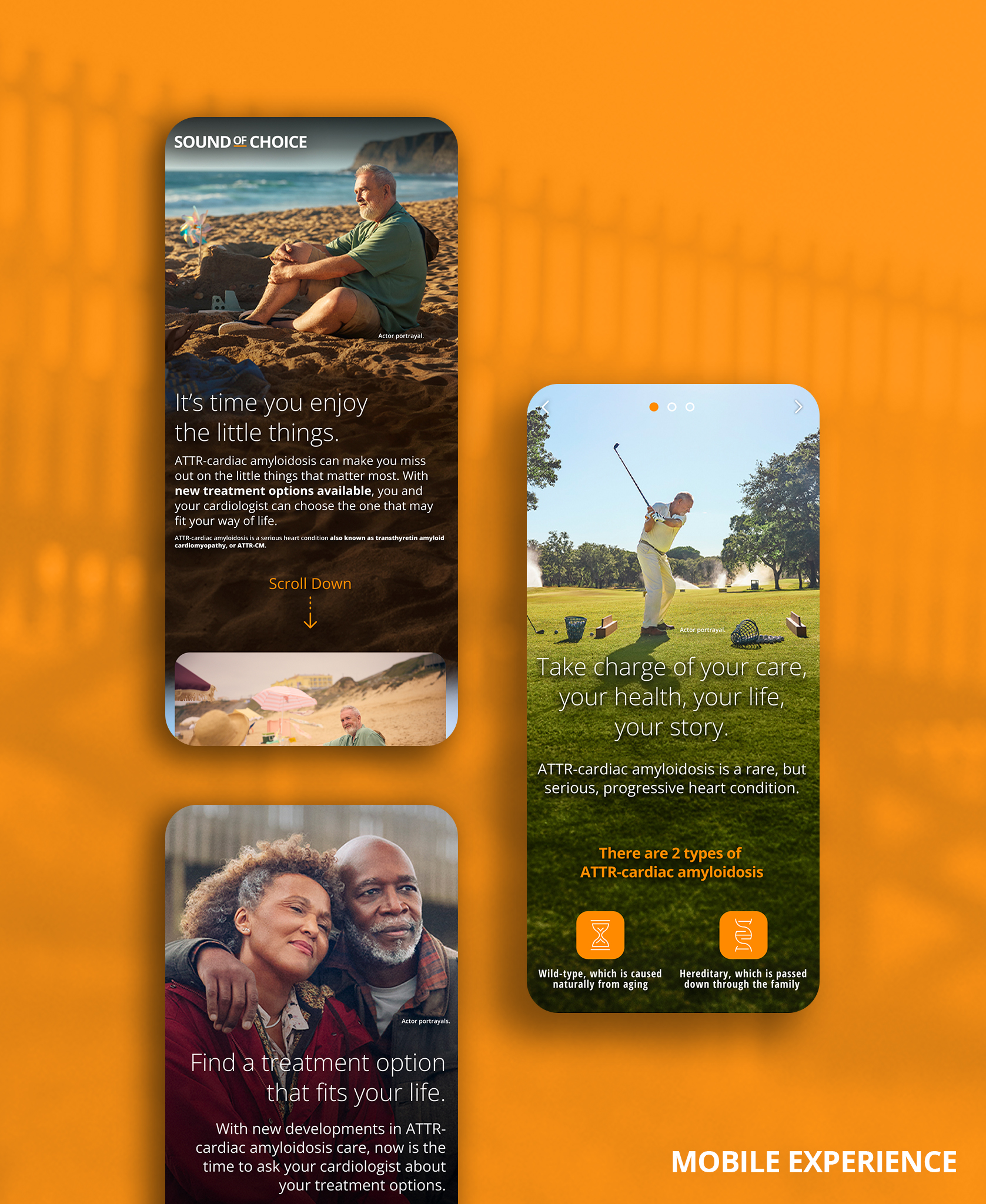What if you never experienced this again?
This question sparked everything.
At diagnosis, patients hear all the little things that ATTR-CM takes away. But they needed to hear a solution.
From diagnosis, ATTR-CM sounds scary.
ATTR-CM—or transthyretin amyloid cardiomyopathy—is a life-threatening heart condition that primarily affects older adults. While Pfizer brought the world the first treatment for ATTR-CM in 2018, patients and physicians asked for more options. Without a choice in treatment, patients feared their condition would take away the little things in life—the beach days, the golf trips, the autumn strolls.
Sound can cut through noise
When BridgeBio finally delivered a new treatment option, it meant patients had real choices, and our team had real questions:
How could we break through in a disease space dominated by our behemoth competitor? Their massive unbranded DSE awareness campaign dramatized life with symptoms, depicting a patient’s home inundated by notes about the condition. But patients didn’t need to hear about compromises, they needed to hear about choices.
How could we break through in the TV space? The space is dominated by loud, fast, and information-heavy ads. But patients didn’t need any more chaos, they needed life to feel calm.
And finally, how could we break through using cliché scenes? ATTR-CM patient research asserted that beach days, autumn walks, and golf trips were what patients missed the most. But the pharma world didn’t need more cliches, they needed TV to feel real and compelling.
Ultimately, our job was to tell people that having choice in treatment meant having a choice in life—but we needed to deliver in a way that would shatter the status quo.

Sound can speak louder than words
So how do you capture that “you’ve got a choice” moment in a way that truly breaks through? You hear it.
“The Sound of Choice” campaign was built around the visceral relief of finally having an option. We stripped the “noise” away to let sound, silence, and simple human moments tell the story.
The campaign unfolded through 3 cinematic, unbranded TV spots, each centered on a simple yet deeply meaningful moment: A grandfather making sandcastles with his grandchildren, taking in life’s pleasures. A couple enjoying a walk with their dog down the boardwalk, the morning breeze filling the air. A man enjoying the driving range with friends, a love he once feared he’d have to give up. They were the real, attainable joys that they could finally take back now that they have a choice in treatment.

But let’s dive deeper into the sound.
Each spot was meticulously crafted around a signature auditory moment—the sensory stimulation of the sea’s crashing waves, children’s laughter and birds flying above, and the thwack of another golf ball. Gentle yet powerful, these sounds cut through the clutter and represented the reawakening of freedom through choice.
We flipped TV on its head and embraced peace and quiet. We invited viewers in, rather than pushing information on them. This campaign prioritized patient emotion over pharma promotion and didn’t focus on selling a drug. Instead, we acknowledged what this moment truly meant for patients. The campaign’s namesake, “The Sound of Choice,” became more than a tagline—it was an emotional cue designed to evoke relief, clarity, and control.
In a world of loud, fast, and information-heavy ads, we embraced quiet, restraint, and human truth.

Sound was a success
In just over 2 months (including the holiday break from November 2024 to Jan 2025):
- Drove over 58k sessions to the SOC website.
- Site visitors were highly engaged with the onsite video with ~800 video plays.
- The average visit duration on site surpassed the 1-minute benchmark with 1 minute and 13 seconds.
This is a custom heading element.
The average visit duration on site surpassed 1 minute benchmark with 1 minute and 13 seconds.
